Unit 9 Lesson 1 Translations
Unit 9 Lesson 1: Translations

Lesson Overview
Translations
What You Will Learn
- the mathematical language used to describe changes in the positions of geometric figures
Overview
In this lesson, you will learn some of the mathematical language used to describe changes in positions of geometric figures. You will show your learning by doing translations and other isometric transformations.
Essential Understanding
You can change the position of a geometric figure without changing its size or shape. A geometric figure's size, shape, and orientation stay the same when you slide the figure in one direction.
- Read pages 381-388 in your course textbook
This course is based on a textbook that is viewable by clicking on the textbook icon. Keep the textbook open while you go through the lesson so that you may refer to it throughout the lesson.
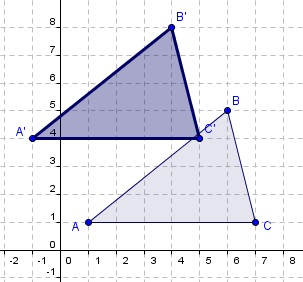
Lesson 1: Translations
Proceed to the Next Page
Prepare for Application
Instructions
You have now studied Constructions of Parallel and Perpendicular Lines. It is now time to demonstrate your learning.
Try the activities below on your own. You should be able to answer these before beginning the practice.
Create an extra journal called 'Unit 8: Lesson 1 activities' and do these in your journal.
Activity 1
Does the transformation appear to be an isometry? Explain.
a. 
b. 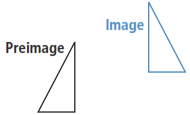
Activity 2
Use the diagram below for questions 1-2. In the diagram,
- What are the images of point D?
- What are the pairs of corresponding sides?
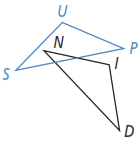
Activity 3
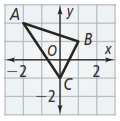
Use the figure for questions 1-2.
- What are the images of the vertices of the translation ? Graph and its image.
- Draw , , and . What relationships exist among these three segments? How do you know?
Activity 4
The translation image of is with , , and . What is a rule that describes the translation?
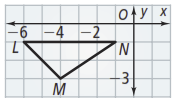
Activity 5
Refer to Problem 5 on page 385 of your online textbook. If the bishop moves 3 squares left and 3 squares down, where is the bishop about its original position?


